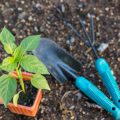Introduction to Composting in British Gardens
Composting is a time-honoured practice across the United Kingdom, offering an eco-friendly method to recycle organic waste and enrich soil health. In British gardens, composting takes on unique characteristics influenced by the region’s temperate maritime climate, variable rainfall, and diverse garden sizes—from compact city plots to sprawling rural allotments. The fundamental principle of composting involves the biological decomposition of organic matter, such as kitchen scraps and garden trimmings, into nutrient-rich humus. However, UK gardeners frequently encounter specific challenges: persistent dampness leading to waterlogged bins, lower average temperatures slowing decomposition rates, and a prevalence of clay or heavy soils influencing compost structure. Understanding these distinct environmental factors is essential for effective troubleshooting. This article provides a structured overview of common composting problems faced in British gardens, addressing localised issues and practical solutions tailored for UK conditions.
Managing Excess Moisture in Damp Climates
British gardens are no strangers to high rainfall and persistent dampness, conditions that can quickly turn a promising compost heap into a sodden, anaerobic mess. Managing excess moisture is therefore a critical aspect of successful composting in the UK. The key lies in achieving the right balance between green (nitrogen-rich) and brown (carbon-rich) materials, as well as employing specific techniques tailored to the British climate.
Recognising Signs of Overly Wet Compost
Excessive moisture can manifest in several ways: a foul smell (often reminiscent of rotten eggs), a slimy texture, or even visible pooling of water at the base of the heap. These symptoms indicate an imbalance that hampers aerobic decomposition and invites unwanted pests or pathogens.
Techniques for Moisture Management
To counteract the typical British weather, consider these practical strategies:
| Technique | Description | Benefits |
|---|---|---|
| Add Brown Materials | Increase the proportion of carbon-rich items such as shredded newspaper, cardboard, straw, or dried leaves. | Absorbs excess water and restores structure, improving airflow. |
| Improve Drainage | Place your heap on bare soil or create a base layer with coarse twigs or woodchip. | Facilitates natural drainage and prevents waterlogging. |
| Turn Regularly | Aerate the compost by turning it weekly with a garden fork or aerator tool. | Promotes evaporation and ensures uniform decomposition. |
| Shelter Your Heap | Use a breathable cover like hessian sacking or a purpose-made compost duvet during heavy rain. | Keeps out excess rain while allowing airflow to prevent stagnation. |
| Avoid Wet Inputs | Let grass clippings and vegetable peelings dry out slightly before adding them to the heap. | Prevents further increase in moisture content. |
Troubleshooting Persistent Problems
If your heap remains persistently wet despite these measures, assess its location—low-lying areas may be prone to flooding. Relocate to higher ground if possible. Additionally, consider constructing a simple roof or lean-to structure to offer more permanent protection from relentless rainfall. By actively managing moisture levels, you will foster aerobic conditions ideal for efficient composting and avoid common pitfalls unique to British gardens.

3. Keeping Rodents and Urban Wildlife at Bay
British gardens, particularly in urban areas, are frequently visited by foxes, rats, and other wildlife attracted to compost bins. These visitors can create a mess, disturb your composting process, and even become a neighbourhood nuisance. Practical measures are essential to maintain a healthy compost heap while respecting local wildlife and keeping your garden tidy.
Secure Your Compost Bin
To deter unwanted animals, invest in a sturdy, well-fitted compost bin with a secure lid. Wooden slatted heaps may be traditional but are less effective at keeping persistent rodents and foxes out. If you use a plastic compost bin or tumbler, ensure there are no gaps or cracks where small animals could squeeze through. Place the bin on hard standing or fit wire mesh underneath to prevent burrowing from below.
Avoid Attracting Wildlife with Food Waste
One of the most common mistakes is adding cooked food, meat, dairy products, or oily scraps to your compost. These items emit strong odours that attract urban wildlife. Stick to vegetable peelings, fruit cores, coffee grounds, eggshells, and garden waste. Shredding larger pieces helps speed up decomposition and reduces lingering smells.
Choose the Right Location
Place your compost bin away from fences and walls that could provide cover for rodents and easy access routes for foxes. An open, visible spot discourages visits from shy creatures. Avoid placing bins directly against sheds or homes where animals may seek shelter.
Regular Maintenance Is Key
Turn your compost regularly to aerate it and disrupt nesting opportunities for rodents. Check for signs of digging or burrows around the base. If you notice persistent activity, consider repositioning your bin or reinforcing barriers with fine-gauge wire mesh.
Neighbourly Considerations
Be mindful of neighbours who may also experience issues with wildlife due to improperly managed compost heaps. Open communication about best practices helps foster a supportive community approach to urban gardening challenges.
By implementing these practical steps tailored to British gardens, you can enjoy successful home composting while minimising disturbances from local wildlife and maintaining harmony within your neighbourhood.
4. Dealing with Slow Compost Decomposition
One of the most frequent challenges faced by British gardeners is the slow breakdown of compost, often due to the country’s lower average temperatures and limited sunlight, particularly outside the summer months. These conditions can significantly impede microbial activity, resulting in sluggish decomposition. However, there are several practical solutions tailored to UK gardens that can help accelerate the composting process.
Understanding the Impact of UK Climate
The cool and damp climate in much of Britain means compost heaps may not reach optimal temperatures for rapid decomposition. Microbial activity slows down when it’s cold, while excessive moisture from frequent rainfall can lead to compaction and poor aeration.
Effective Strategies for Faster Composting
| Issue | Solution | Recommended Practice |
|---|---|---|
| Low Temperatures | Insulate the Compost Heap | Use old carpet, straw bales, or bubble wrap around bins to retain heat. |
| Limited Sunlight | Optimal Placement | Position bins in the sunniest spot available; avoid shaded corners whenever possible. |
| Poor Aeration | Regular Turning | Turn the pile every 2-3 weeks to introduce oxygen and prevent compaction. |
| Excess Moisture | Add Dry Materials | Incorporate shredded cardboard, newspaper, or dried leaves to balance moisture levels. |
| Lack of Nitrogen | Add Green Materials | Add grass clippings or kitchen scraps to boost nitrogen content for microorganisms. |
Using British-Specific Materials
British gardens offer abundant resources such as autumn leaves, grass cuttings, and even wool waste from local sheep farms. Mixing these with regular garden and kitchen waste helps maintain a balanced carbon-to-nitrogen ratio, vital for efficient composting.
Troubleshooting Checklist for UK Gardeners
- Check temperature: If your heap feels cold, add more green (nitrogen-rich) materials and insulate further.
- Avoid waterlogging: Cover your heap during heavy rain but allow some airflow to prevent stagnation.
- Mince larger items: Chop woody stems and branches into smaller pieces for faster breakdown.
- Monitor progress: Healthy compost should smell earthy; foul odours indicate imbalances needing correction.
By adapting these strategies specifically for the British climate, gardeners can overcome slow decomposition and enjoy rich, crumbly compost even in cooler months. Consistent monitoring and making seasonal adjustments will ensure ongoing success with home composting throughout the UK.
5. Balancing Green and Brown Waste with UK Garden Materials
Achieving the right balance between green (nitrogen-rich) and brown (carbon-rich) waste is vital for successful composting in British gardens. An improper ratio can lead to slow decomposition, unpleasant odours, or an overly wet or dry heap. British gardeners often have unique materials at their disposal, from seasonal lawn clippings to kitchen scraps and autumn leaves. Understanding how to source and combine these typical UK materials will help avoid common composting pitfalls.
Understanding Green and Brown Waste
Green waste refers to materials high in nitrogen, such as grass cuttings, vegetable peelings, and fresh plant trimmings. Brown waste consists of carbon-rich items like dried leaves, shredded newspaper (preferably uncoloured), cardboard, straw, and woody prunings. For a healthy compost pile, aim for roughly two parts brown to one part green by volume, though this can be adjusted based on weather conditions and material availability.
Sourcing Greens in British Gardens
Typical sources include:
- Lawn clippings – abundant in spring and summer, but add in thin layers to prevent matting
- Kale, cabbage, or lettuce leaves discarded after harvesting
- Vegetable peelings and coffee grounds from the kitchen
Sourcing Browns with a Local Twist
UK gardens often provide:
- Fallen autumn leaves – a valuable resource; consider storing some for year-round use
- Twiggy prunings from hedges or shrubs – shred before adding for faster breakdown
- Cardboard packaging – particularly useful given the rise in home deliveries; ensure its plain and torn into small pieces
Troubleshooting Common Issues
If your heap is slimy or smells sour (like rotten eggs), it likely contains too much green waste—add more browns such as shredded cardboard or dried leaves. If decomposition is slow or the pile looks dry and fibrous, increase green content with kitchen scraps or grass cuttings. Always turn your heap regularly to aerate and mix materials for even composting.
By thoughtfully combining local garden resources using these guidelines, UK gardeners can maintain an efficient compost system that supports healthy soil and reduces household waste.
6. Odour Issues and How to Solve Them
Persistent bad smells from compost heaps are a common concern in British gardens, often signalling an imbalance or the presence of unsuitable materials. Understanding the typical causes and scents found across the UK—such as sour, ammonia-like, or rotten egg odours—can help you pinpoint and remedy issues efficiently.
Identifying Common Compost Odours
British weather, with its frequent rain and cool temperatures, can lead to excess moisture in compost heaps. This dampness, combined with poor aeration, often results in anaerobic conditions that produce unpleasant sulphurous or musty smells. Ammonia scents may arise from too many nitrogen-rich materials like grass clippings, while a rotten egg smell suggests waterlogged compost lacking oxygen.
UK-Specific Causes
- Excess Rainfall: Waterlogged heaps due to heavy rainfall, especially in northern regions.
- Grass Clipping Overload: The British penchant for neatly mown lawns can result in too many fresh clippings being added at once.
- Lack of Structure: Finer garden waste without woody material fails to provide airflow channels needed in wetter climates.
Actionable Remedies Using Local Resources
- Add Brown Material: Incorporate shredded cardboard (from household packaging), autumn leaves, or small twigs collected from native trees like sycamore or oak to absorb excess moisture and balance nitrogen levels.
- Turn Regularly: Use a garden fork to turn your heap every fortnight, improving aeration. This is especially important after periods of rain common in the UK.
- Raise the Heap: Place your compost bin on a wooden pallet or gravel layer sourced from local DIY shops to promote drainage and prevent soggy bases.
Troubleshooting Checklist
- If you detect a strong ammonia scent, add more carbon-rich browns such as dried hedge trimmings or cardboard boxes from local grocers.
- If your heap smells like rotten eggs, check for compacted or waterlogged areas and fork through to introduce air.
- A persistent sour odour may indicate acidic conditions—add a sprinkling of garden lime (readily available at British garden centres) to neutralise pH levels.
Summary
By recognising the specific odour challenges posed by the British climate and using locally available materials and practical methods, gardeners can swiftly restore healthy composting processes—and keep their gardens smelling sweet all year round.
7. Final Tips and Best Practices for British Composters
As you address the unique challenges of composting in British gardens, adopting a few final tips and best practices will ensure your compost remains healthy and productive throughout the year. Here are some concluding recommendations tailored to the UK’s climate and gardening traditions:
Concluding Recommendations for Year-Round Compost Health
Regular Monitoring and Turning
Check your compost bin at least once a fortnight to monitor moisture levels and decomposition progress. Turning the heap with a garden fork every 3–4 weeks encourages aeration, helping to prevent common issues such as compaction or anaerobic odours, especially after rainy spells typical in Britain.
Adapting to Seasonal Changes
The British gardening calendar brings distinct seasonal variations. In spring and summer, grass cuttings and fresh green waste are abundant—mix these with woody prunings or cardboard to maintain balance. During autumn, make use of fallen leaves by adding them in layers; they break down slowly but contribute valuable carbon. In winter, decomposition slows due to lower temperatures—insulate your heap with old carpet or cardboard to retain warmth, but avoid overloading it with wet material to prevent soggy conditions.
Pest Prevention Best Practices
To deter rodents and urban foxes, always cover kitchen scraps with a thick layer of brown materials, and keep lids secured. Avoid adding cooked food or meat, which can attract pests more commonly in densely populated areas.
Reflecting the British Gardening Calendar
Spring
This is an ideal time to start a new heap or give existing bins a good turn. Add early grass clippings sparingly and mix with twigs or shredded paper.
Summer
Compost heaps can dry out quickly; check moisture levels regularly and add water if necessary. Increase turning frequency if you notice unpleasant smells.
Autumn
Make the most of leaf fall by layering leaves with green waste. Consider starting a separate leaf mould pile for future soil improvement.
Winter
Reduce additions to the heap as microbial activity slows. Cover bins for insulation, but continue to add small amounts of kitchen waste mixed well with browns.
Summary
By following these best practices aligned with the British climate and seasonal rhythms, you’ll maintain a thriving compost bin that supports healthy soil and robust plant growth all year round. Regular attention and adaptation to local weather patterns are key—ensuring your efforts contribute positively to both your garden and the environment.


